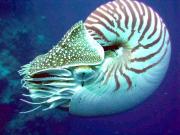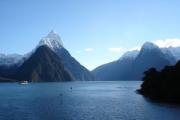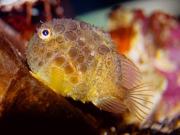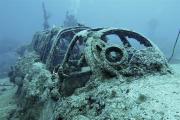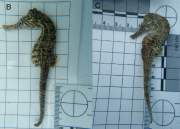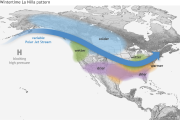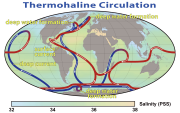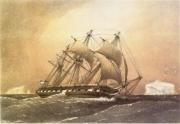Radio Program
Our regular Science and the SeaTM radio program presents marine science topics in an engaging two-minute story format. Our script writers gather ideas for the radio program from the University of Texas Marine Science Institute's researchers and from our very popular college class, Introduction to Oceanography, which we teach to hundreds of non-science majors at The University of Texas at Austin every year. Our radio programs are distributed at to commercial and public radio stations across the country.
The chambered nautilus comes from a long line of survivors. Its earliest ancestors appeared more than 500 million years ago. Its family tree has persisted through five global extinctions, including the one that killed the dinosaurs.
But the modern-day nautilus may not do so well. It’s threatened by the current extinction event, caused by our changing climate. And it’s also threatened by its own beauty. People are killing millions of them for their spiral shells and the shells’ mother-of-pearl lining.
Fjords are some of the most beautiful features on the planet. But they may not be all that beautiful deep down. They may release as much methane into the atmosphere as all the deep oceans combined.
Fjords are jagged notches in rocky coastlines. They formed as glaciers gouged deep into the rock. They’re small—they account for about a tenth of a percent of the total ocean surface. Most are fed by rivers or by streams from melting glaciers.
Judging by its name alone, you might expect the Pacific spiny lumpsucker to be a fearsome creature. But divers often describe the fish as cute and comical. They’re small and round, they don’t swim well, and they’ll even eat from a diver’s hand. So, despite the name, the Pacific spiny lumpsucker is nothing to fear.
The fish is typically no more than an inch or two across. It’s found near the coast from Washington State to northern Japan. It lives mainly in shallow waters close to shore.
Many dead airliners spend the afterlife in the desert—in “boneyards” where they’re stripped for spare parts and scrap metal. But a few are ending up in wetter graveyards—as artificial reefs at the bottom of the sea. They provide an anchor for coral and oysters, which attract fish and other marine life. They also attract divers, boosting marine tourism.
People have made reefs out of everything from boats to piles of tires to subway cars. And crashed airplanes have made good reefs as well. But sinking an aircraft on purpose has become popular only in recent years.
Sweetings Pond is its own watery universe. It’s on Eleuthera, an island in the Bahamas. The pond is about a mile and a half long and up to 45 feet deep. It’s separated from the ocean by a narrow strip of land. Seawater and microscopic organisms pass through pores in the limestone rock. Otherwise, the pond is isolated from the rest of the marine world. Even so, it’s home to an abundance of life—octopuses, brittle stars, clams, and other organisms.
Few things are worse than a guest who just won’t leave. And lately, that appears to be the case with La Niña—a period of cooling in the Pacific Ocean that brings nasty climate conditions to much of the United States. There are indications that La Niñas are becoming more common and staying longer. In fact, the winter of 2023 is bringing a “triple-dip” La Niña—only the third since scientists began tracking the phenomenon, in 1950.
When the fish markets of Chennai, India, process the daily catch, there are lots of leftovers: tails, fins, guts, and other parts—as much as a quarter to half of the entire catch. Those parts typically are dumped at the shoreline for the tide to sweep away. But the tide returns a lot of the debris to shore, where it attracts insects, dogs, and other scavengers. And it makes the shore smelly and unsanitary.
The Labrador Sea—a narrow body between Canada and Greenland—has been described as one of the “lungs” of the deep ocean. It absorbs oxygen from the atmosphere and deposits it deep below the surface. There, it enters a current that carries it into the North Atlantic Ocean, providing much of the oxygen that sustains life. And a recent study revealed new details about this process.
We’re all familiar with RNA viruses—or at least their effects. They cause colds, flu, measles, mumps—and COVID-19. So, you might not be thrilled to learn that scientists recently discovered 5500 new species of them in the world’s oceans. Many of them are so different from other species that the scientists have recommended adding some new branches to the virus “family tree.”
These viruses encode their genetic material not in DNA, as humans do, but in RNA—a material that’s similar to DNA but not quite the same.
HMS Challenger set sail from England to study the world’s oceans on December 7th, 1872. Its accomplishments were so massive that it took 23 years and 30,000 pages to publish them all. Yet the job isn’t finished even now. Scientists look at its results to teach us how the oceans have changed in the 150 years since it headed out to sea.

